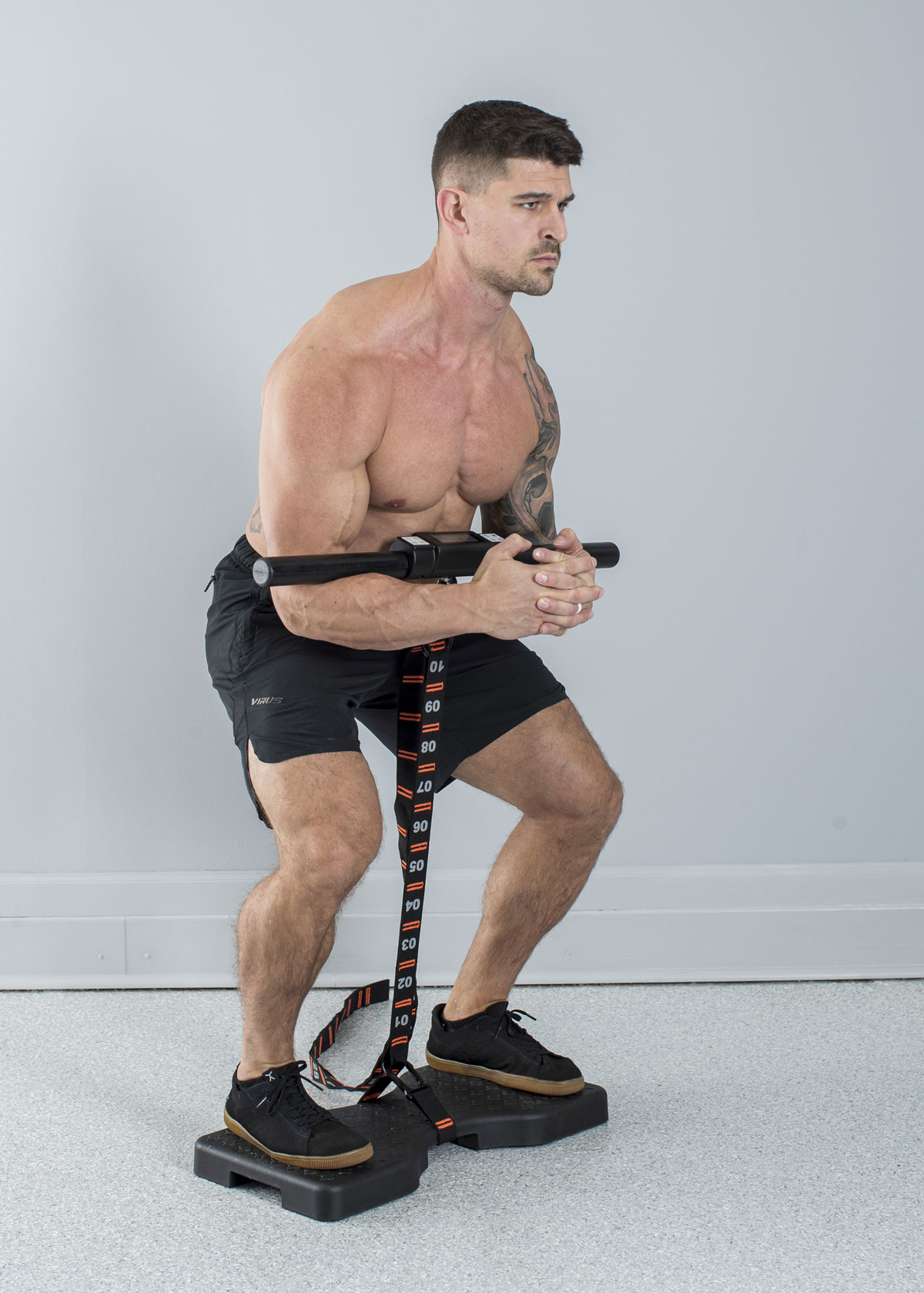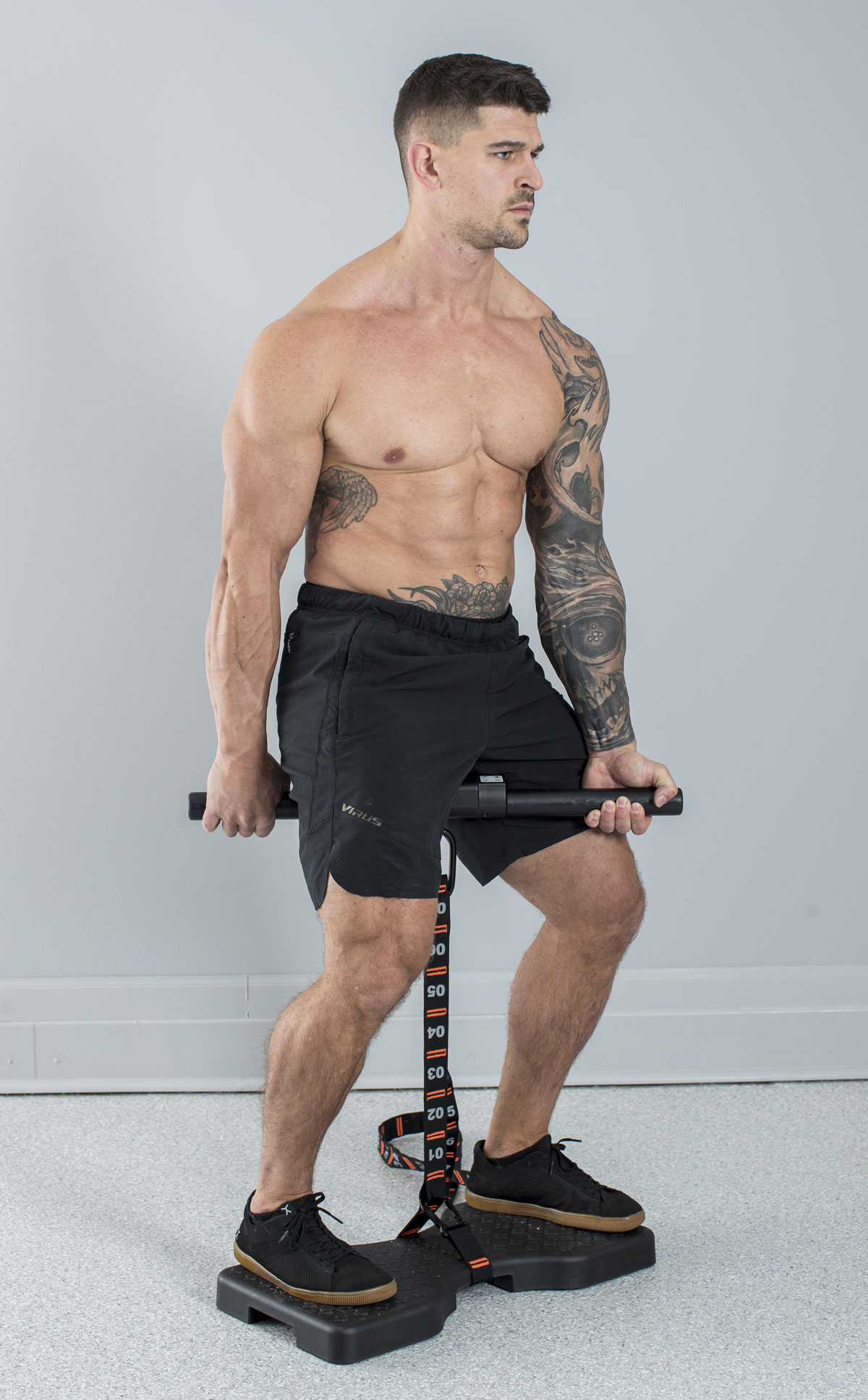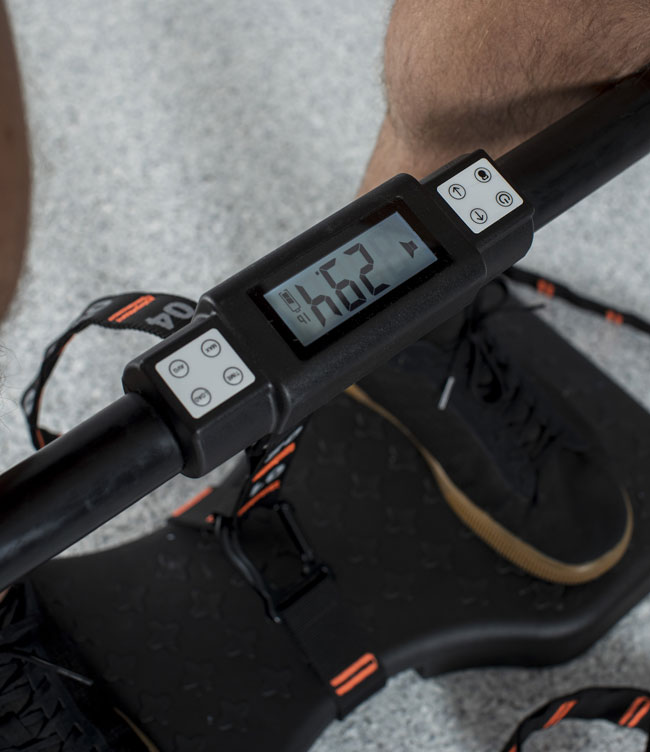Why Are Isometrics Such A Surprisingly Powerful Way to Train The Abs?
By Paul “Coach” Wade

Lots of strength athletes and coaches have taken to Isomax work like fishes to that there water. They love the isometric versions of deadlifts, rows, presses, curls, triceps extensions, and all the other great drills they have performed with barbells and dumbbells in the gym. But here’s a question we get a lot at Dragon Door HQ—how do you work your abs with an Isomax?
I get the confusion. Conventional "wisdom" has it that to work your abs, you gotta drop to the floor and do sit-ups, or head to the cable machine for crunches of all kinds. And lots of sets and reps, right? And you can’t use an Isomax, can you?
Sure you can. Isometrics is the best form of training for your midsection—bar none. It will not only optimally increase the functional strength of your abdomen and waist, it will also massively reduce your risk of injury—be it a hernia, muscle tear, or low back tweak—to near zero.
But Coach—some tanned juicer I saw on TikTok said that you need full range-of-motion…you gotta stretch and squeeze your abs, for every rep!
Look kid, if he told you to inject a bunch of toxic bathtub chemicals into your ass, would you do that too? You would? Never mind.
Abdominal work is primarily isometric
When folks talk "abs", they always trot out the old jive that your abs "pull your sternum towards your hips"—and that’s true, they can do that. But the lion’s share of athletic work done by your midsection muscles—all of them—is isometric.

The old timers did no crunches, machine work or circuits to build perfect, thick abs; but they did tons of hip lifts and presses. Their muscles worked isometrically on those lifts.
Think about this: whenever you exert yourself—whether squatting, deadlifting, rowing, pressing—you generate intra-abdominal pressure. (That’s just a fancy way of saying your intestines and other lower organs all press outwards against your midsection.) The more force you exert, the more pressure is generated. The body’s instinctive response to this is to brace the muscles of the waist, particularly the abdominals and obliques.
This is an isometric response, and it must be equal to the increased internal pressure, or the intestines can actually split open the trunk—this is what a hernia is. Most sedentary folks don’t have training in the isometric response, and their stomach muscles are weak—this is why so many newbies or non-lifters give themselves hernias when they do have to lift heavy. By contrast, if you look at the abdominals of a strongman—who squats and deadlifts and presses frequently—they will all have very powerfully developed abdominals, even if they don’t specifically work them. They have been trained isometrically already.

When you are squatting six hundred pounds and your abs have to hold your core in place, why would you need to do crunches or sit-ups, where you move just a few pounds?
If you really want to stimulate your abdominals, perform big, compound exercises—particularly squats and deadlifts, with as much force as possible. Ideally, you should train these drills isometrically—due to the Force-Velocity Relationship, you can perform compound exercises with maximum force only when you are not moving. Isometric drills carry a far lesser risk of injury, also—even when you are using greater force.
Hanging leg raises are the greatest dynamic exercise for the stomach muscles in existence, and the role of the abdominals is largely isometric here, too—certainly, the way most of us perform them. The actual lifting is done by the hip flexors. Dynamic, up-and-down movements are not required for optimal abdominal development.
If you are eager to use your Isomax on specific abdominal movements, you still can. Set the bar up over a bench for a straight arm pullover and combine that with a crunch position. Or—like the awesome isometrics master Chrys Johnson you can always get more creative:
You shouldn’t really think in terms of "abs" while training—waist, or midsection, is better. All these muscles have to act together (isometrically!) as a girdle to anchor one another and produce athletic strength. This includes not just the abdominal muscles, but the muscles of the spine and sides of the trunk.
The spinal erectors work isometrically, too
The spinal erectors opposite the abdominals also do their most important work isometrically. They keep the back flat and hold the vertebrae safely in place during deadlifts, squats, rows, cleans, fireman’s carries, etc. That’s right—when you are deadlifting and squatting for your lower back, those muscles are working isometrically. The best way to train them—again—is with isometrics. You don’t need to risk your discs by moving up and down with a heavy load. Just fix your position and—applying rise time—exert as much force as possible.

Zercher work blasts the spinal erectors, from hips to neck.
Lots of isometric work with drills like deadlifts, squats, Zercher lifts, and rows, will act like a black belt masterclass in keeping your spine safely locked into position—because that’s literally all you do, there’s no relaxing and re-resetting for another rep. No wonder coaches worldwide recommend isos as a spinal bulletproofing!
Isometric lateral chain training
The muscles running along the sides of the trunk—the lateral chain—are no different. Human beings don’t bend sideways very much in everyday life—even athletes avoid side-bending movements if they can help it (watch grappling to see how true this is). Our range of motion in the lateral plane is low, and the lateral chain is nowhere near as strong as its posterior and anterior counterparts. The major athletic function of these muscles is stabilization.
The more force you exert, the more the lateral muscles of the trunk must stabilize the movement—that’s why very heavy exercises (such as squats and deadlifts) used to be accused of "widening" the waist. (In reality, fully developed lateral trunk muscles will give your midsection a tight, steely look—they won’t budge the tape measure a single inch. That’s the job of donuts, pizza, candy, and such.)
If you are using maximum force on these exercises, you are already working your lateral muscles. Overhead pressing is another great exercise that requires lateral stability. Anything asymmetrical, with a twist, or anti-rotation properties—like Jefferson lifts, single-leg deads, lunge squats, etc.—amplify this effect, so throw them into your program from time to time.

Isomax Jeffersons. Once again—the more force, the better. Use isometrics for an optimal result.
Do you really need an "ab day"?
What about programming? Sheridan’s Law of Innervation teaches us that the more force is involved in an exercise, the more muscles are involved. Because isometrics require more force output than regular lifting, more muscle groups are involved when you train. In fact, although you can compartmentalize your muscle groups if you wish, the truth is that almost every isometric drill is a total-body exercise. All presses, pulls, squats—even curls—work the entire body. Everything must work holistically to generate the huge forces required for progress. This includes the spinal muscles, lateral muscles, obliques and abdominals.
As for sets and reps? Screw that old jazz that you need high reps and sets for abs—preferably every day. This is one the old-timers definitely got wrong. Your abs are no different from any other muscles. Train them hard with progressive isometric drills, then let them rest.
It’s actually ironic that so many iso-athletes are worried about undertraining their midsections and abdominals…every time you perform a drill, you are working your abs hard. Don’t worry!
Here’s the take-home: don’t waste your time training your "abs" with endless crunches and machine reps that wear down your lower back and get you nowhere. For a thick, strong waist, work hard and progressively on big compound isometric drills.

Regular isometrics are great—but only with the Isomax can you really train progressively, by digitally monitoring our force levels. Users are amazed by their massive jumps in progress from session-to-session. Isometrics work.
Midsection mindset
You can enhance your natural reflexive midsection engagement by deliberate training. Every time you perform a drill, make an effort to tense the abdominals. Smoothly tense them to maximum contraction, and "breathe behind the shield", like a karate master.
As you breathe smoothly, keep increasing intra-abdominal pressure—as you would if you were trying to force a bowel movement. As the pressure increases, straighten up your trunk, and feel the muscles of your lateral chain tense and ready to stabilize.
Keep your back flat and braced, to activate the spinal muscle isometrically—squeezing the glutes can help the lower back muscles fire, so tighten that butt, too. Practice all this in the seconds before you begin your rise time—the time you begin to smoothly exert power in your compound iso drills.
Before long, this conscious effort will become second nature, and you’ll have a midsection of pure titanium—useful for unlocking maximum strength, essential for injury prevention, and goddam invaluable if you find yourself taking a shot to the midsection if you find yourself in a Waffle House on the wrong side of the tracks at two in the morning.
Back